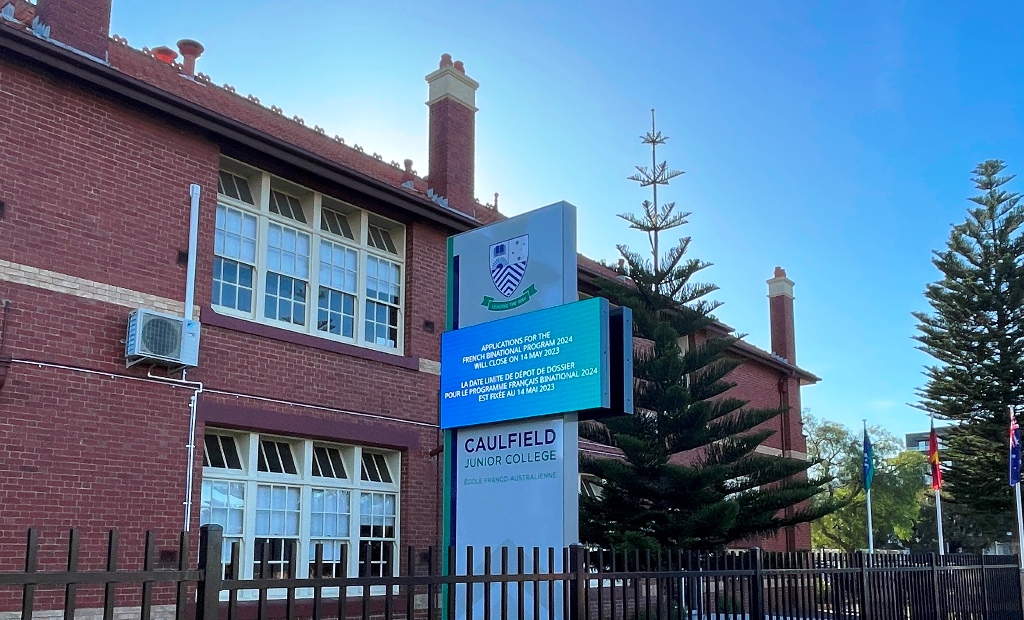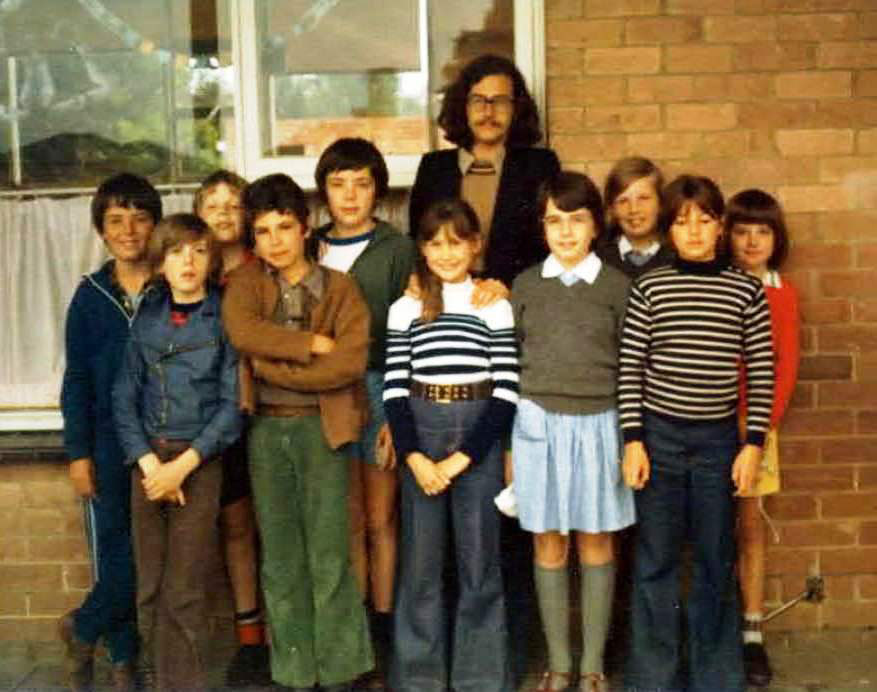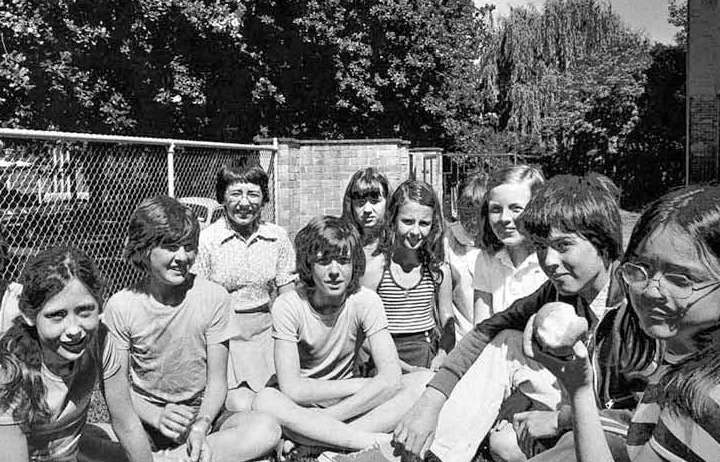History of the French Section Elective

The EFM has been in existence since 1998. It started with around ten children and a teacher, and now has over 300 students and ten teachers. Alain Herz wrote the text below in September 2005 based on testimonies received from the school’s ‘former actors’, for this reason I would like to thank: Mireille Beaufremez, Elisabeth Blackburn, Régis Lansac, Alain Roger, Patrick Blanquet and Professeur Colin Nettelbeck.
1968-1971
1968, the year that shook students in France and in so many other cities around the world, saw the creation of the Petite Ecole Française de Melbourne (that is what it was called at the time) by Corentin Trétout.
Corentin Trétout was sent to Melbourne by SNECMA (manufacturer of aircraft engines) to take care of the “Mirages”. Corentin and his wife, Charline, have a daughter, Joëlle, of school age. With other French parents, he launched the project of a French school.
The teacher is Jacqueline Weiss, wife of the Cultural Advisor at the French Embassy, and mother of two children. At the beginning, the class takes place at Madame Weiss’s. The French teacher at the girls’ secondary school stationed at Lauriston in Malvern, a friend of the Weiss, intercedes with the principal of the school: two fairly spacious rooms are made available to Jacqueline in the janitor’s house (one for 8 to 9 primary school children, one for 5 or 6 secondary school students). La Petite Ecole is completely independent from the Lauriston school.
September 1971: The Weiss are transferred to Austria. You have to quickly find another qualified teacher: Mireille Beaufremez takes over from Jacqueline Weiss and teaches the French primary program. The group of secondary school children follows correspondence courses from the Ministry of National Education under the supervision of Bernard Duquesne (provided by the CNTE, National Center for Tele-Teaching).
1972-1980
A year later, in September 1972, major changes took place in Lauriston: the Little School had to leave. In an emergency, Corentin Trétout finds a “Church Hall” in Armadale. The School is alone there, it is a temporary arrangement and it remains there until Christmas 1972.
In January 1973, the School moved to another private Anglican school in Toorak “Glamorgan” (a division of Geelong Grammar School, Douglas Street in Toorak). The principal accepts the School, very interested in this experience. Unfortunately, the room it offers is so small that it is virtually impossible to operate. La Petite École stayed at Glamorgan for 6 months. The students finish the French school year there in June 1973.
Corentin Trétout then finds another Catholic primary school which accepts to rent two classrooms: “Our Lady of Lourdes Primary School”, Wynnstay Road in East Prahran. The School moved there for the start of the September 1973 school year and stayed there for 2 years. The numbers are increasing: 20 children in primary school. Aid is allocated in primary and secondary education, a worker is in charge of Mathematics. Régis Lansac is in charge of the Literary section.
Mireille Beaufremez teacher from 1970 to 1977 at the Petite École in Melbourne. Here a local press article dating from 1975-76

Régis Lansac and his pupils in April 1974 at “Our Lady of Lourdes”, Prahran East

The pupils of the Petite Ecole at Our Lady of Lourdes

In 1974, Corentin Trétout, founder of the school, returned to France. He is replaced by Alain Roger as the president of the parents. A new director arrives at “Notre Dame de Lourdes”, relations are strained. Its objective is to recover the rooms that the School occupies.
In September 1975, the School was given the ultimatum to leave the premises immediately! Alain Roger struggles. After visiting multiple schools, he finally finds a compassionate principal, George Thompson, of Richmond Primary School (Cremorne Street), who accepts the primary section. Mireille Beaufremez remained in charge of this section until December 1977. A few months before her departure, Michèle Jorgen, a new teacher, was the second and succeeded her.
At the same time, Régis Lansac and the secondary section moved to John Gardiner High School (now Hawthorn Secondary School, Tooronga Road in Hawthorn).
Secondary school students take a correspondence course from the National Education (National Center for Distance Learning), with homework sent back to France where they are corrected. The School obtains from France to send a cooperant, Michel Saillard, who helps with subjects such as Mathematics, Sciences and Chemistry. The children were taught English, physics / chemistry, natural sciences, fine arts and sports with the Australians.
Article from 1976 : “Mme Beaufremez and children of the little French School”


1980-1987
La Petite Ecole remained in Richmond until 1985. Michele Jorgen headed the primary section until 1981, then Elisabeth Blackburn succeeded him. Ariane Blindt, a French teacher, also teaches there, as does a German teacher Ms. Svece and Greek / history / geo Alain Jacquet.
1985 – La Petite École moves to Auburn South Primary School (Tooronga Road in Hawthorn, near Hawthorn Secondary School) with Elisabeth Blackburn and another teacher: Christine Casken. La Petite École is guided with varying degrees of success by a succession of Presidents of the Parents’ Association. Tired of the vagaries of this management, the parents of students ask for help from the French Ministry of National Education.
1987-1997
The School then came under the supervision of the AEFE (Agency for French Education Abroad), a national public institution of an administrative nature dependent on the French Ministry of Foreign Affairs. Michel Trinson was its director between 1987 and 1993. Patrick Blanquet took over the post from 1993 until it closed at the end of 1997. France’s support varied. From the full support of a VSN (Volunteer in National Service) plus one or two expatriate teachers in the “good” years, to only the payment of 30% of a resident contract at the end.
From 1988 to 1992, Michel Trinson tried to obtain accreditation for a binational Franco-Australian school on the model of the Telopea Park School in Canberra, but these discussions were unsuccessful.
In 1990, La Petite École is moving again, this time from Hawthorn to “Camberwell Primary School”, still with Elizabeth Blackburn and Eliane Fontaine (sent by France). The director of “Camberwell PS”, Anne Best, was very Francophile.
In 1992, the primary section of the Petite École merged with the secondary at John Gardiner (Hawthorn Secondary School). At the secondary level, the courses are always supported by the CNED (National Center for Distance Learning). The Brevet des Colleges is insured in Melbourne, but is corrected in Canberra.
The number of pupils reached a maximum of 45 around 1989-1990 (approximately 15 in secondary, 30 in primary) to… 1 (in secondary for one term in 1994). The vast majority of children are the children of expatriates (not necessarily French).
The number of teachers follows the variation in the number of students: from 1 to 3 in primary. 1 to 4 in secondary, plus part-time contractors. In primary school, we can also remember the names of Janine Rama, Chantal Agier and Catherine Lahaye.
In secondary school: note Catherine Le Roux, Eric Hakenholz, Christophe Buquet, Nicole Marion, Denise Hamilton and Michel Trinson himself. The lack of staff forced the AEFE to decide to close the doors of the school at the end of the 1997 school year. But Catherine Lahaye decides not to stop there…
1998
A committee of parents and teachers around Catherine Lahaye decide to continue teaching on their own and look for another host school. They thus survey 60 schools! North Caulfield School (later Caulfield Junior College) is receptive to the Parents of Pupils Association project.
In September 1998, it was the inauguration of the first school year of the French School of Melbourne ”.
